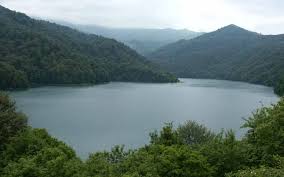 There are nearly 8,350 rivers in the country of which only 24 are long enough to be counted. All the rivers ultimately meet the Caspian sea. The longest river is Kur measuring 1,515 kms in length, but it flows from Turkey through Georgia into Azerbaijan where it meets Aras river before flowing into the Caspian sea. Azerbaijan total territory also consists of four islands in the Caspian Sea which form an area of 30 sq.kms.
There are nearly 8,350 rivers in the country of which only 24 are long enough to be counted. All the rivers ultimately meet the Caspian sea. The longest river is Kur measuring 1,515 kms in length, but it flows from Turkey through Georgia into Azerbaijan where it meets Aras river before flowing into the Caspian sea. Azerbaijan total territory also consists of four islands in the Caspian Sea which form an area of 30 sq.kms.
